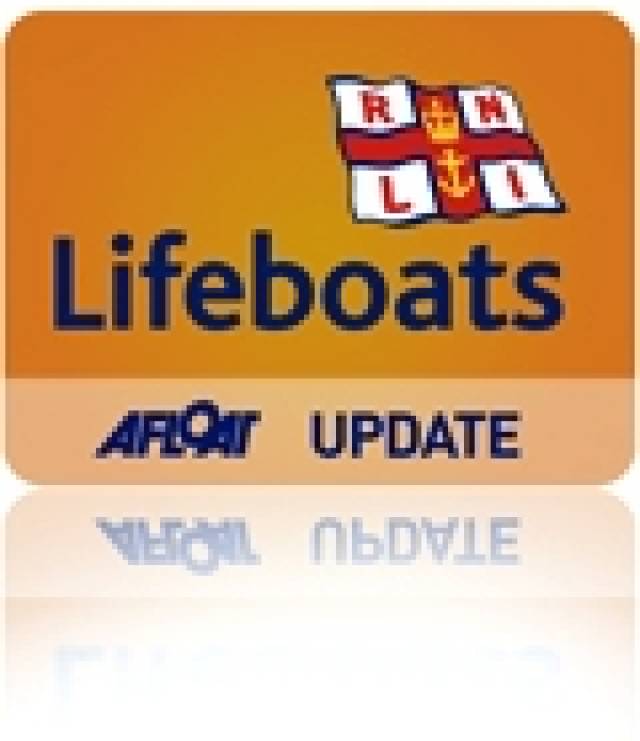#rnli – The RNLI are inviting the public to a meetingabout plans for a permanent Lough Derg RNLI Lifeboat Station in Dromineer . The public will meet the architects/engineers at a consultation on the Station plans for Lough Derg. The meeting will take place at Lough Derg Yacht Club, Wed. October 15 from 7-9pm.
The Lough Derg RNLI Lifeboat Station, began operations from the premises of Lough Derg Yacht Club at Dromineer, halfway down the east shore of the lake in County Tipperary. Now that plans for our new permanent Station in the village are well underway, it is important the the public become engaged with the consultation process for the new permanet station location in their locality.
On May 25, 2014, the Lough Derg RNLI Lifeboat Station celebrated its tenth birthday. In those ten years, the lifeboat has launched 240 times, 60 of those at night. Volunteer crews have rescued 340 people and saved the lives of three people.
Following a rescue August 13 of this year, the Skipper of the vessel wrote this letter to our Lifeboat Operations Manager, Mr. Liam Maloney (quote used with kind permission).
The lifeboat reached us within 20 minutes of my call and towed us to the safety of Shannon Sailing Dromineer. [...]
It would be hard to do justice to the spped and manner in which all those people concerned responded to my emmergency call, including the operator who answered my radio call.
For many years the RNLI and the lifesaving work of its volunteers, have enjoyed the strong support of the people of Nenagh through the tireless efforts of campaigners in the RNLI's expanding fund raising committee, chaired locally by Niamh McCutcheon. The RNLI is a charity that saves lives, it does not receive Governent grants and relies entirely on the contributions and legacies from the public to continue its vital operations.
Lough Derg RNLI Lifeboat Station is one of forty four RNLI Stations operating in Ireland. A local application to station an RNLI lifeboat on Lough Derg, led by Charles Stanley Smith and Teddy Knight, became reality, when, on 25 May 2004, the Lough Derg RNLI Lifeboat officially began service. In the preceding year and a half, volunteer crews and members for the Operations Committee were recruited and underwent intensive training on the water and in the classroom, with RNLI Divisional Trainer Assessor Helena Duggan - our Trainer Assessor to this day.
Lough Derg is one of three RNLI inland Stations in Ireland, the other two are located at Lough Erne Yacht Club, Enniskillen, County Fermanagh in Northern Ireland and our sister Station on the river Shannon, at Lough Ree.
Lough Derg is the lowest, and at twenty-seven miles long, the largest of the series of lakes on the river Shannon, the longest river in the Republic of Ireland. The shores of Lough Derg are bordered by three counties with the most outstanding countryside. It has secluded lagoons that can be accessed by narrow rivulets and many public and private harbours.
It is a beautiful, serene and charming freshwater lake. However, it can be provoked by high winds that funnel between the hills that border its southern narrower stretches of water. With little warning Lough Derg suddenly becomes an unforgiving sweep of water. At Parker's Point, where two stretches of the lake meet from the west and from the south, the water depth decreases sharply from one hundred and twenty feet to less than twenty feet. In a south westerly these factors combine to produce extremely confusing seas, with waves that come from the two directions at once to produce treacherous steep 'pyramid' waves. It is at this point on the lake that vessels frequently get into difficulties.
In the past Lough Derg was a major conduit for the passage of people and trade goods along the river Shannon. Nowadays the lake is used for pleasure by fishing and sailing boats, cruisers and barges. By necessity the rescue services must be present and ready to deal with increasing traffic and any possible difficulties that might ensue. Lough Derg is ready to do that, with volunteers on call twenty fours hours a day, every day of the year
































































